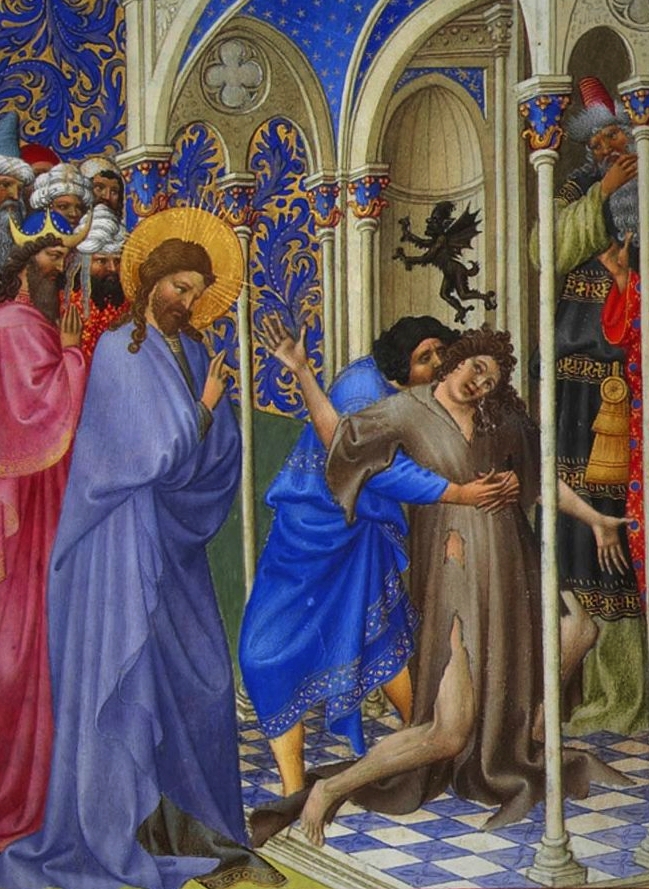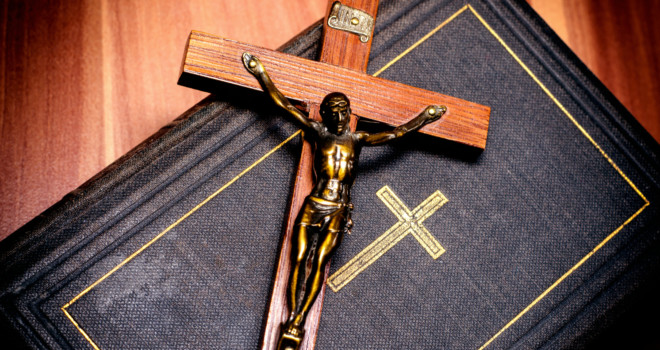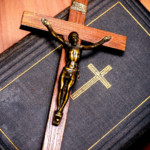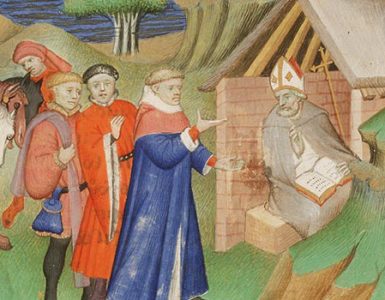Editor’s note: As an exorcist in Rome, Fr. Gabriele Amorth conducted countless exorcisms while he also wrote and spoke extensively on the subject. The following is his account of his work as an exorcist and it is from the book, An Exorcist Explains the Demonic.
What happens during the exorcism to the person afflicted by the possession? Above all, it is necessary to say that normally a person affected by possession desires to be liberated from the influence of the demon and as a result will ask to be exorcized. A difficulty can arise in approaching the rite.
When the person enters the room where the exorcist works, it sometimes happens that he will begin to feel the influence of the spell more intensely and will manifest a nervousness and discomfort, or, in more serious cases, the person will enter into a trance and must be dragged like a dead weight. In cases like this, there must always be a friend or relative or his pastor with him. At the end of the rite, when I reawaken the person, he will often appear defogged, completely in control again, and will be able to say a prayer peacefully and to exchange a few words with me.
During the rite I ask the unclean spirit his name; each one has a name. When the demon has a biblical name or one given in tradition (for example, Satan, Beelzebub, Lucifer, Zebulun, Meridian, or Asmodeus), we are dealing with “heavyweights” who are much tougher to defeat. Naturally, the Prince of Lies always tries not to respond or is vague, if he does not lie outright. If he does reveal his name, and does not lie, it is because God Himself imposes it on him, which is an anticipatory sign of the liberation. Indeed, the fact that he reveals his name weakens his power significantly and is an encouraging sign.
The same can be said when I ask when and how he entered that particular body and when he will leave. But here also it is necessary to be very prudent: rarely does the date given correspond to the real date.
Someone asked me if the possession assumes the same extreme forms as seen in the famous film The Exorcist. Only in part. The film was made with much seriousness, but it is not without exaggeration: most of the time, the cases that exorcists treat are not as serious. This said, there can be extremely violent situations or truly remarkable displays. At times, in the most violent cases (and not only for this are they the most difficult to treat), it happens that the person must be immobilized during the rite in order to impede him from harming himself or others. It is also a good rule to have some of the persons who assist with the prayer intervene to keep the demoniac still.
There can certainly be some very spectacular phenomena during exorcisms, such as speaking in tongues—that is, speaking in foreign or esoteric languages—the overturning of the eyes, and levitation. I recall two cases: the first was that of a young mechanic who worked not far from my community at Rome and who, even before the exorcism was initiated, began to levitate just as I placed my hand on his shoulder. Five people could not hold him still.
The second incident was related to me by Father Candido*: he exorcized a young peasant girl of seventeen, who was more accustomed to speaking in her dialect than in Italian. While he was reciting the formulas in Latin, Father Candido was distracted by the continuous questions addressed to him by the two priests who had accompanied the girl. After having had enough, he said to them in Greek rather than in Italian (perhaps he was tired), “Shut up! Stop that!” Immediately the girl turned toward him and asked him, in a satanic manner: “Why do you order me to be quiet? Tell it to these two who continue to interrupt you!”
In other cases, the person exorcized can spit nails, glass, or hair. These objects do not come from the esophagus, in which case they would seriously wound the internal organs; rather, they materialize in the vomit coming out of the mouth. Twisted pieces of iron, woven thread, knotted twine, and similar objects can also be found in the cushions and mattresses of the possessed.

While interrogating the demon during the prayer, one can sometimes discover the amulet or charm that the wizard was served in order to complete the rite. In all these cases, the objects are burned in order to break the bond. Be aware that it is always necessary to do it with prayer, especially when one finds an indication of the devil invoking the blood of Jesus. Otherwise, as it once happened to Father Candido, when he was still a novice, one risks looking bad because he absorbs the negative effects of it.
This last type of phenomenon alone is not enough to certify a diabolical possession, even if there is a good indication. Therefore, it is possible that rather than a possession, there is some vexation. In this case, the exorcist’s prudent appraisal will serve to try to establish a reliable diagnosis.
Another question regards the duration of the rite. Here, obviously, it varies from case to case. The battle with Satan is always executed in diverse ways, and one can never tell ahead of time what will happen. We can say that the rite, in the cases in which the possessed does not have violent reactions, lasts, at a minimum, a half hour. In more serious cases, it can go on for hours.
Where is exorcism practiced? According to the new rite of exorcism, whenever possible, the ritual is to be performed in an oratory (a small chapel) or in another appropriate place, with only a few persons present. A crucifix and an image of the Blessed Virgin Mary should be prominent. As for my situation, at times, my congregation, the Society of St. Paul, places some discreet venues in our convent at my disposal. But in thirty years, I must confess that I have alternated between two or three places. The exorcist is considered troublesome or an inconvenience, and it is difficult to find a welcome in places adaptable for him and his work.
The exorcist does not establish a particular formation during the rite: the ritual manual does not specify anything on this matter; one can be to the right, to the left, standing or seated. It is only necessary that he begin with the words “Ecce crucem Domini,” [behold the cross of the Lord] while he places a strip of his stole on the neck of the presumed demoniac and his right hand on his head.
The final question is difficult to answer: Where does the spirit of evil go once it leaves the person? It is not known: I command him, in the name of Jesus, to return to the eternal inferno or to go under the Cross of Jesus, who is the only one who can order him where to go.
✠
*Fr. Candido Amantini (1914–1992) was a Passionist priest, spiritual director, and exorcist in Rome. Stationed at the Sanctuary of the Scala Sancta, he saw dozens of people a day for confession and spiritual guidance and later taught moral theology while administering the rites of exorcism. He was the mentor and teacher of Fr. Amorth.
This article is from a chapter in Fr. Amorth’s An Exorcist Explains the Demonic: The Antics of Satan and His Army of Fallen Angels. It is available from your favorite bookstore or online through Sophia Institute Press.













